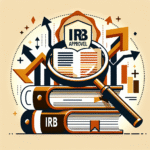
Introduction
Welcome to Independent Variables 101: Your Guide to Mastering Research Methodology! Understanding independent variables is not merely an academic exercise; it is pivotal for anyone looking to conduct meaningful and impactful research. Whether you’re a budding scientist, a graduate student, or a seasoned researcher, grasping the concept of independent variables can elevate your research skills dramatically.
In an ever-evolving world driven by data, comprehension of independent variables lays the groundwork for hypothesizing effectively, designing studies responsibly, and interpreting results accurately. But what exactly are independent variables, and why do they matter? Let’s dive deeper into this fundamental aspect of research methodology and unlock its potential together.
What Are Independent Variables?
Definitions and Distinctions
At its core, an independent variable is a variable that is manipulated or changed in an experiment to observe how it affects another variable, known as the dependent variable. To clarify:
- Independent Variable (IV): The variable that you change or control in a scientific experiment.
- Dependent Variable (DV): The variable affected by changes in the independent variable.
Understanding this basic relationship is a critical component of mastering research methodology.
Example of an Independent Variable
Consider a simple research scenario: A study examining the effect of different types of fertilizer on plant growth. Here, the type of fertilizer is the independent variable, and the growth of the plant is the dependent variable. Manipulating the type of fertilizer allows researchers to observe changes in the growth of the plants, thus establishing causal relationships.
Why Are Independent Variables Important?
Establishing Causality
Hill’s Criteria of Causation emphasize the necessity for a strong relationship between an independent and dependent variable to assert causality. Understanding this allows researchers to make more substantive claims based on their data.
Improving Research Design
A well-defined independent variable leads to a more rigorous research design, enabling researchers to construct their methodologies effectively. This structure aids in eliminating bias and enhances the validity of results.
Real-World Application: Case Study of Nutritional Studies
In nutritional studies, independent variables often include the type of diet—such as low-carb vs. low-fat—while the dependent variables may be weight loss or cholesterol levels. Researchers have found compelling results indicating that diet type can significantly influence health outcomes. These studies demonstrate how correctly identifying independent variables can lead to actionable insights in public health.
How to Identify Independent Variables
Criteria for Determination
Identifying which variables qualify as independent can be tricky. Here are criteria to help:
Manipulability: Can the variable be altered or controlled in the experiment?
Exclusivity: Is it distinct enough from the dependent variables to allow clear measurement?
- Impact: Is there a theoretical basis for believing this variable will affect the dependent variable?
Practical Steps
Literature Review: Examine previous studies to understand common independent variables used in your field.
Hypothesis Formulation: Based on your research question, develop a hypothesis that clearly identifies your independent variable(s).
- Pilot Testing: Conduct preliminary experiments to refine your selection of independent variables.
Common Types of Independent Variables
Experimental vs. Non-Experimental
Independent variables can fall into two categories:
Experimental: In a controlled environment where researchers introduce changes intentionally (e.g., varying bedding material in an animal study).
- Non-Experimental: Observational studies where independent variables might be naturally occurring (e.g., socioeconomic status affecting educational achievement).
Quantitative vs. Qualitative
Quantitative Independent Variables: These can be measured numerically, such as age or income.
- Qualitative Independent Variables: These are categorical, such as gender or type of treatment.
Designing Research with Independent Variables
Crafting Your Experiment
When designing a research study, clarity on your independent variables is essential. Here’s a simplified breakdown to guide you:
Specify Your Research Question
- What is the goal of your research?
- What independent variable(s) do you need to manipulate?
Determine Control Variables
- What other factors might influence the results? These need to be controlled to avoid confounding.
- Select Appropriate Measurement Tools
- Choose tools that effectively capture both your independent and dependent variables.
Table: Comparison of Research Design Types
| Research Design Type | Manipulation of Independent Variables | Control of Other Variables |
|---|---|---|
| Experimental | Yes | Yes |
| Quasi-experimental | Yes | Limited |
| Observational | No | Limited |
Analyzing Outcomes: The Role of Independent Variables
Data Gathering
Once independent variables are established, it’s time for data collection. Utilizing survey tools, experiments, and observational methods will allow you to gather data on your dependent variables.
Statistical Analysis
After data collection, conducting statistical analyses helps in interpreting the influence of independent variables. Techniques such as regression analysis can identify how changes in the independent variable correlate with changes in the dependent variable.
Case Study: Alcohol Consumption and Academic Performance
In a study examining the impact of alcohol consumption (independent variable) on academic performance (dependent variable), researchers gathered data through surveys and analyzed it using regression methods. Results demonstrated a notable negative correlation, illustrating how a well-defined independent variable can yield impactful insights.
Enhancing Understanding Through Visual Aids
Example Chart: Impact of Independent Variable on Dependent Variable
| Quantity of Independent Variable (X) | Dependent Variable Outcome (Y) |
|---|---|
| 1 liter of fertilizer | 10 cm growth |
| 2 liters of fertilizer | 15 cm growth |
| 3 liters of fertilizer | 20 cm growth |
Conclusion
Through Independent Variables 101: Your Guide to Mastering Research Methodology, we’ve traversed the essential role that independent variables play in the research paradigm. From understanding definitions to refining your research design, each aspect contributes to a more potent grasp of the relationship between independent and dependent variables.
As you embark on your research journey, remember: clear identification and manipulation of independent variables can significantly enhance the reliability and validity of your findings. Leverage these insights to make informed decisions in your research endeavors, create meaningful hypotheses, and ultimately contribute valuable knowledge to your field.
FAQs
1. What is the difference between an independent variable and a control variable?
Answer: An independent variable is the factor that is manipulated to observe its effect on the dependent variable, while a control variable is kept constant to prevent confounding effects.
2. Can there be more than one independent variable?
Answer: Yes! Many studies incorporate multiple independent variables, allowing researchers to assess their individual and interactive effects on the dependent variable.
3. How do I know if I chose the right independent variable?
Answer: Ensure that the variable aligns with your research question, is manipulable, and has a theoretical basis for impacting the dependent variable.
4. What statistical methods can describe the relationship between independent and dependent variables?
Answer: Common methods include regression analysis, t-tests, and ANOVA, each suited for different types of data and research questions.
5. Is it necessary to include control variables in my research?
Answer: Including control variables is advisable as it helps isolate the effect of the independent variable on the dependent variable, enhancing the accuracy of your conclusions.
By understanding independent variables, you’re now armed with powerful tools to conduct research that is not only rigorous but also meaningful. Dive into your investigations with confidence, and remember, every great discovery begins with a single variable!
















